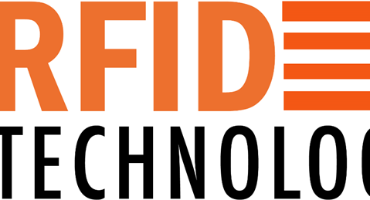Integrating UHF RFID (Ultra-High Frequency Radio Frequency Identification), AI (Artificial Intelligence), and Quantum Computing in retail can significantly enhance automated checkout processes, AI-driven demand forecasting, and inventory management.
Here are the true values of this integration:
Automated Checkout Processes
Faster Customer Checkout Experience:
UHF RFID: Allows for instant scanning of multiple items simultaneously without the need for line-of-sight, speeding up the checkout process.
AI: Enhances the checkout experience with real-time price checks, automated discounts, and fraud detection.
Quantum Computing: Accelerates data processing, enabling instant transaction verification and reducing wait times.
Reduced Human Error:
UHF RFID: Minimizes manual scanning errors by automating the identification process.
AI: Analyzes transaction data to identify and correct pricing discrepancies or errors in real-time.
Quantum Computing: Provides robust error correction algorithms, ensuring accurate transaction processing.
Enhanced Customer Experience:
UHF RFID: Streamlines the checkout process, enhancing customer satisfaction.
AI: Personalizes the checkout experience by analyzing purchase history and offering tailored promotions.
Quantum Computing: Enables complex, real-time analytics to enhance personalization and customer engagement.
AI-Driven Demand Forecasting
Optimized Stock Levels:
AI: Analyzes historical sales data, current trends, and external factors (e.g., weather, events) to forecast demand accurately.
Quantum Computing: Processes vast amounts of data faster than classical computers, providing more accurate and timely demand forecasts.
Reduced Stockouts and Overstocks:
AI: Predicts demand patterns to ensure optimal inventory levels, reducing the risk of stockouts and overstocks.
Quantum Computing: Solves complex optimization problems efficiently, ensuring precise inventory allocation across stores and warehouses.
Dynamic Pricing Strategies:
AI: Adjusts pricing in real-time based on demand forecasts, competitor pricing, and inventory levels.
Quantum Computing: Enhances the ability to model and implement dynamic pricing strategies by quickly analyzing multiple variables.
Enhanced Inventory Management
Real-Time Inventory Tracking:
UHF RFID: Provides real-time visibility into inventory levels across multiple stores and warehouses.
AI: Analyzes RFID data to monitor stock movement, identify slow-moving items, and optimize replenishment.
Quantum Computing: Improves the speed and accuracy of inventory data processing, allowing for immediate updates and insights.
Streamlined Supply Chain Operations:
UHF RFID: Ensures seamless tracking of items throughout the supply chain, from manufacturer to retail shelf.
AI: Predicts supply chain disruptions and suggests proactive measures to mitigate risks.
Quantum Computing: Enhances supply chain optimization, solving complex logistics problems quickly to improve efficiency.
Enhanced Loss Prevention:
UHF RFID: Provides accurate tracking to prevent theft and reduce shrinkage.
AI: Detects suspicious patterns and anomalies in inventory data, enhancing loss prevention efforts.
Quantum Computing: Enhances security protocols and data encryption, protecting inventory data from cyber threats.
Cross-Store and Warehouse Integration
Unified Inventory Management:
UHF RFID: Enables seamless integration and tracking of inventory across multiple locations.
AI: Provides a centralized view of inventory, helping retailers manage stock levels efficiently across stores and warehouses.
Quantum Computing: Processes data from multiple locations simultaneously, providing real-time insights and enabling coordinated inventory management.
Efficient Redistribution of Stock:
AI: Identifies stock imbalances and recommends redistribution of inventory to meet demand across different locations.
Quantum Computing: Optimizes redistribution strategies by quickly solving complex logistics problems.
Improved Customer Satisfaction:
Ensures product availability across all stores, reducing instances of customers not finding desired products.
Competitive Advantage
Innovation Leadership:
Early adopters of these integrated technologies can set themselves apart in the competitive retail market.
Agile Market Response:
Enhanced ability to respond quickly to market trends and consumer demands, maintaining a competitive edge.
Integration of UHF RFID, AI, and Quantum Computing in retail can dramatically accelerate and enhance automated checkout processes, demand forecasting, and inventory management, resulting in greater efficiency, reduced costs, and improved customer satisfaction.
- Brands / Manufacturers
- BarcodePrinters
- Barcode Desktop Label Printers
- Barcode Industrial Label Printers
- Barcode Colour Label Printers
- Mobile Barcode Label Printers
- HealthCare Barcode Label Printers
- Kiosk Barcode Printers
- Barcode OEM print Engines
- Barcode Labels
- Barcode Ribbons
- Barcode Labelling Software
- Barcode Printer Accessories
- Barcode Printer Service Contracts
- BarcodeScanners
- MobileComputers
- EPoSProducts
- ID-CardProducts
- RFIDProducts
- WirelessNetworking
- OtherProducts
- SoftwareSolutions



